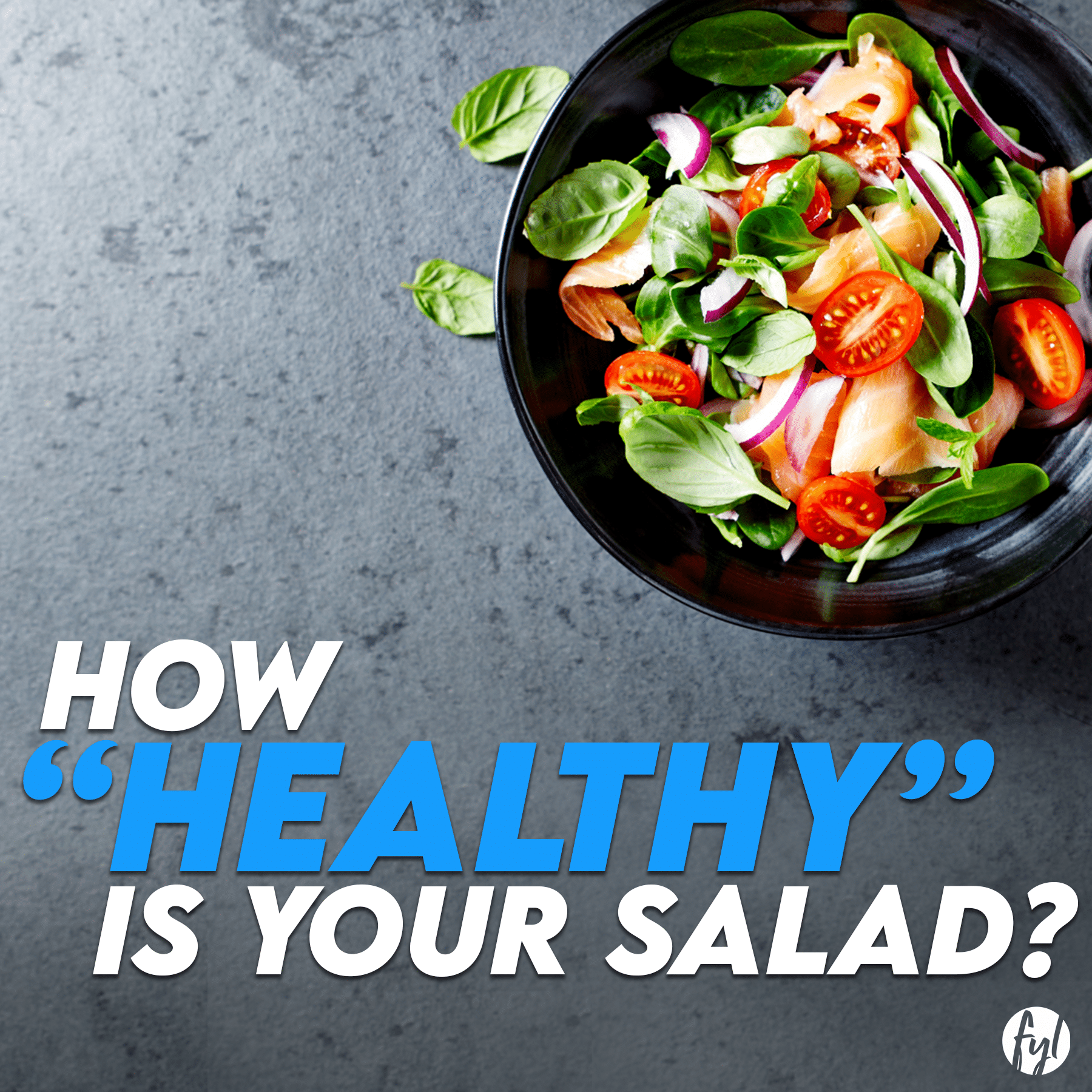As the warmer months are upon us, there is an increasing appeal to a fresh, crunchy salad rather than cooked vegetables. Including a salad at your lunch or dinner meal is a great way to bump up your veggie intake for the day. However, some salad ingredients can have hidden calories, excess sugar, salt or fat. Let’s take a look at some of the common additions to our tasty salads and give you some healthier suggestions for some of those not so healthy add ons.
Salad Dressings
Commercially bought dressings can be laden with fat, sugar and excess. Let’s compare some of the most common varieties and how they stack up. The table below compares 4 different dressings. There is a large difference in energy between some of the creamy dressings. Even choosing a lighter version of mayonnaise cuts the energy content of the dressing down by half. The best option is to make your own dressing at home using a standard white wine or balsamic vinegar, lemon or lime juice or a tsp of olive oil. These are all low in sugar and saturated fat, with all but the olive oil being virtually energy free.
| Dressing (per 20g serve) | Energy | Fat (total) | Saturated Fat | Sugar |
| Kraft Mayonnaise whole egg | 520kj | 13.6g | 1.2 | 0.6g |
| Paul Newman’s Ranch | 400kj | 10g | 1.6g | 0.2g |
| Praise mayonnaise whole egg light | 238kj | 5g | 0.7 | 2.6g |
| Praise Balsamic Vinegar Deli Style | 170kj | 3.1g | 0.4g | 3.1g |
Salad Toppers
Additions such as commercially available salad toppers, croutons, crunchy noodles or cooked bacon can all add extra energy to your salad. Belladottie Tuscan garden salad topper, for example, adds an extra 200kj to your salad per serve, a handful of cooked bacon pieces/1 rasher adds 230-400kj depending on the cut of bacon, and some croutons or noodles can add another 250kj per serve. While it is ok to add some of these ingredients to your salads occasionally, if you are trying to manage your weight these can quickly add up may hinder your weight loss efforts.
Some healthier toppings to try:
- Fresh fruit: try adding a few slices of mango, apple, pear or orange to your salad
- Seeds: Try adding a tablespoon of sesame, pumpkin or sunflower seeds for some extra crunch
- Different veggie combinations: try adding some veggies you wouldn’t normally eat such as artichokes, radish, roasted beetroot or pumpkin, edamame beans, alfalfa sprouts or a few olives
- Pickled veggies: try adding some sauerkraut, gherkins or pickled ginger for some extra tang and prebiotic fibre
Cheese
While cheese can help you reach your calcium serves for the day, adding a large amount to your salad will increase the energy content considerably and this may undo your hard work towards your weight loss goals. Try sticking to a matchbox size piece or a pre-cut slice and choose lower energy varieties as much as possible such as low-fat cheddar, ricotta or cottage cheese.
Store-Bought and Takeaway Salads
While store-bought salads can be convenient when you’re pressed for time, these can sometimes be higher in energy than some takeaway meals and don’t end up being the healthiest meal choice. In fact. Some salads can have even more energy than a takeaway burger!
A pre-packaged garden salad v’s your own homemade version can be significantly higher in energy. For example, 2 cups of garden salad with balsamic vinegar made at home would be roughly 350kj, compared with the Woolworths option which is 857kj per serve. When choosing a salad, stick with those that don’t have too many add ons like croutons or bacon, and try using only half of the dressing or asking for this on the side. If the salad contains protein such as chicken, try to stick to around 1500kj per serve.
| Salad (per serve) | Energy | Fat | Saturated Fat | Sugar |
| Woolworths garden salad | 857kj | 17.5g | 7.8g | 3.6g |
| Zambrero classic bowl (with rice and meat) | 2070kj | 22.4g | 10.8g | 11g |
| Mcdonalds Grilled chicken salad | 2100kj | 35.7g | 7.7g | 5.1g |
| Chicken caesar salad- Grilled Burgers | 2960kj | 43.2g | 8.9g | 4.7g |
Where possible, make your salad at home, and use the strategies we’ve listed above to keep the energy content low. To find out more about healthy eating, check out some of our other blogs or contact one of our friendly dietitians here.







